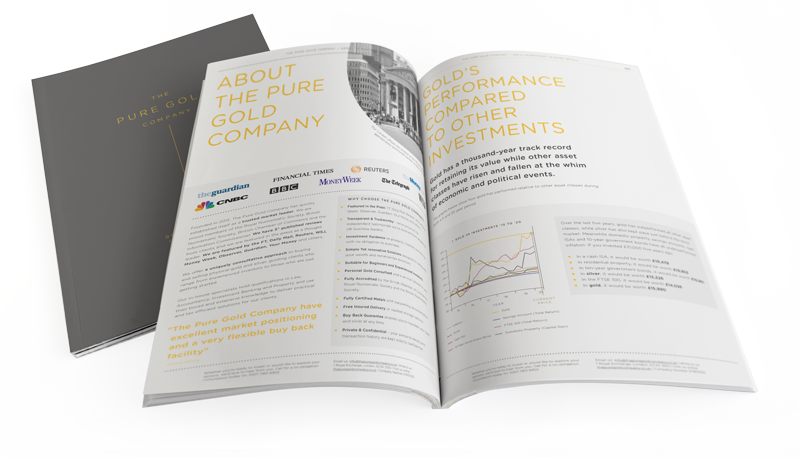Mortgages are going up by hundreds of pounds for many millions of homeowners coming off fixed rates this year. Piling in on top of a major cost-of-living crisis, the fallout for the property market could be worse than expected. Protect your investments before the slump with safe-haven assets like gold.
“A glut of sellers coupled with buyers struggling to secure mortgages with interest rates at multi-year highs, means the outlook for the property market is very uncertain.”
On August 3, the Bank of England raised rates for the 14th consecutive time since December 2021. Like the stubbornly high UK inflation rate, consumers are getting used to the relentless rise in interest rates. The resultant rise in mortgage rates adds to the burden of rising prices and inflation. When will it stop and what is the real-life impact of the build-up of unaffordable mortgages?
Fixed or floating mortgage rates
1.4 million people will be coming off fixed mortgages in 2023, according to the Office for National Statistics. In July they faced an average mortgage rate of over 6% for a five-year fixed term. Most will be coming off very low borrowing rates set when the Bank of England base rate was still 0.1%. In fact, the majority of fixed-rate mortgages in the UK (57%) coming up for renewal in 2023 were fixed at interest rates below 2% according to the ONS. So households can expect their mortgage rate to jump from below 2% to over 6% in one hit. The monetary value of that rise will depend on the size of the mortgage but will likely run to hundreds of pounds a month extra for most people.
This immediate economic shock is looming for some, but has already arrived for others who are on variable-rate mortgages. Since the Bank of England started raising rates at the end of 2021, they will have seen their bills creep up slowly but steadily, from below 2% to an average of around 7.5% in July 2023.
It’s true that “affordability guardrails,” which were designed specifically to stress-test borrowers in case interest rates rose, will have gone some way to ensuring that homeowners would be able to afford an increase. The size and speed of rate rises, and the compounding impact of other costs, means most households are struggling with the cost-of-living crisis. Inflation is still lingering near double digits. People are cutting down and cutting back, which is impacting wider economic growth. While the UK may avoid a recession, growth is only forecast at 0.3% this year, 0.6% in 2024 and a mere 1% in 2025 according to the British Chamber of Commerce. Sluggish growth means lower incomes, falling consumption and looming job cuts.
New home buyers’ dilemma
While homeowners are in for a sudden bill shock, the impact of any interest rate rise on new buyers is equally demoralising. Coming to the market today will cost between 5% and 7%, fluctuating depending on the size of the mortgage and the size of the deposit. Average rates tend to be based on a 75% loan to value, which means putting down a 25% deposit, a substantial capital outlay for most people.
The number of potential buyers being priced out of the market by the rising interest rate is growing. According to the Bank of England, in the first quarter of 2023, the value of gross mortgage advances dropped 28% compared to the previous quarter and was down 23.6% year-on-year. Newly agreed lending fell 40.7% compared to the first quarter of 2022
Ultimately fewer people are able to afford mortgages in light of the interest rate rises, meanwhile, banks are responding to the expectation of further rate rises by pulling mortgage deals, limiting the options for buyers who are still in the market.
High mortgage interest rates: Property market outlook
The housing market is holding up as well as can be expected since the Bank of England began raising the interest rate 18 months ago. The Nationwide House Price Index showed house prices fell 0.2% in July compared to the previous month. However, compared to a year ago, prices were down 3.8%, the weakest outturn since July 2009.
Could this actually be the calm before the storm? Property website Zoopla said in June that there has been a rise in the number of sellers accepting offers at more than 5% below asking price. A glut of sellers coupled with buyers struggling to secure mortgages with interest rates at multi-year highs, means the outlook for the property market is very uncertain.
Discover Gold’s Unique Tax Advantage
Most investments are subject to some form of taxation, but physical gold can be totally free of VAT and capital gains tax.

Major Property Market Crash?
Some analysts foresee a major crash, while others expect a decline of between 5% and 10%. The housing shortage may support any downward pressure, but interest rates, rising mortgage costs and negative equity count heavily against a soft landing.
What is clear is that the stubbornly high inflation rate means the interest rates will remain high for longer. They may, possibly inching up further as the UK government tries to bring inflation to within shouting distance of its 2% target. The squeeze on households will continue to bite, dissuading potential home buyers and forcing some homeowners to sell up, pushing prices down.
Protecting your investment assets
The post-pandemic inflation explosion shouldn’t have been unexpected. Successive governments printed money to ‘quantitatively ease’ the Global Financial Crisis. The coronavirus conspired to close supply chains and disrupt the flow of goods. The upshot of these key effects has been inflation at 40-year highs and historically low-interest rates now just a distant memory. In this volatile and uncertain environment, how can you maintain your wealth when your biggest asset looks set to decline in value?
Safe Haven Investments
All prudent investors should ensure they have a balanced portfolio of assets so that if one falls, the others may counterbalance those losses. In times of extreme uncertainty, investors often turn to safe-haven assets like gold to avoid the volatility of the markets.
The Price of Gold
When markets fall, gold often rises. It is also a commodity whose value rises alongside the cost of other goods so it can be an inflation hedge. Many things impact the gold price; geopolitics, currency movements and government monetary policy, but gold is viewed as a safe haven for good reason. For thousands of years, it has maintained its long-term store of value, providing a counterweight to declines in other asset classes.
A home is often the single biggest investment most people will make, and property is seen as ‘safe as houses’. But smart investors should balance their portfolio with safe-haven assets as the fallout of mortgage affordability starts to bite.


